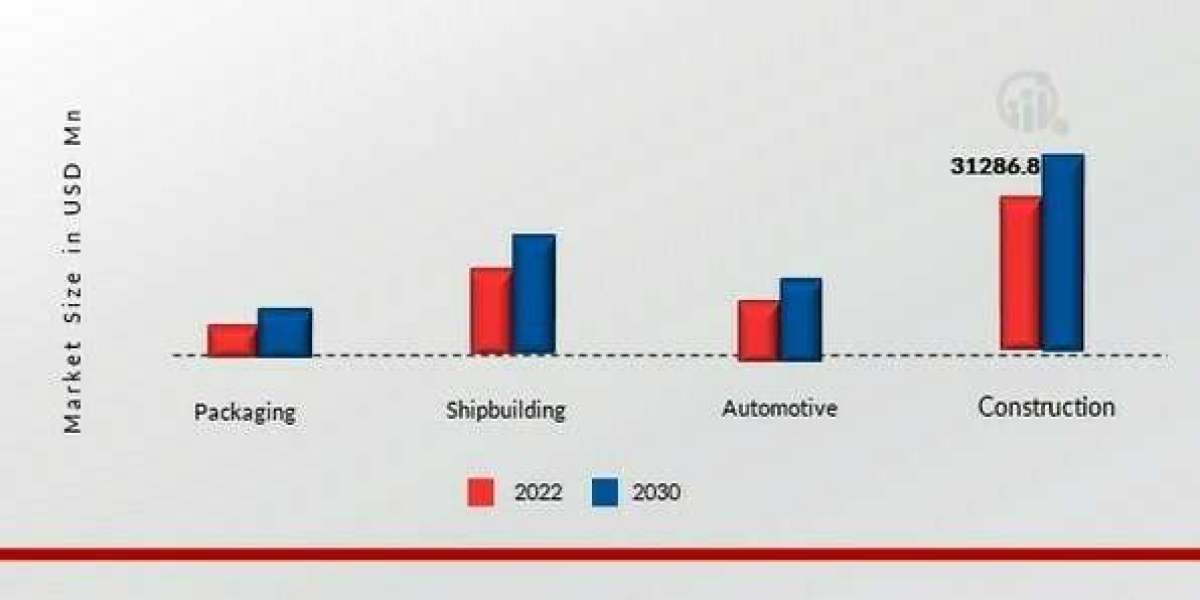The India Used Car Market was valued at USD 25.31 Billion in 2024 and is expected to reach USD 56.81 Billion by 2030 with a CAGR of 13.80% during the forecast period. The Indian used car market has experienced significant growth in recent years, driven by a variety of factors. Rising disposable incomes, coupled with the growing urban middle class, has made private car ownership more accessible to a larger portion of the population.
Industry Key Highlights
Market Value (2024): USD 25.31 billion
Forecast Value (2030): USD 56.81 billion
Compound Annual Growth Rate (2024–2030): 13.80%
Fastest-Growing Region (2024): South India (Bengaluru, Chennai, Hyderabad, Kochi)
Propulsion Trends: Petrol dominates, with growing niches in EVs, hybrids, and CNG
Market Players: Cars24, OLX India, CarDekho, Maruti Suzuki, Toyota, Mahindra & Mahindra, Honda, Ford
Sales Channels: Shift to organized online platforms, though C2C and offline dealership sales remain strong
Download Free Sample Report: https://www.techsciresearch.com/sample-report.aspx?cid=7599
1. Rising Incomes, Expanding Middle Class, and Urbanization
Over the past decade, India has witnessed a sharp rise in per capita incomes, a broadening middle class, and mass urban migration. Cities such as Mumbai, Delhi, Bengaluru, and Hyderabad now host millions of individuals who aspire to own personal vehicles but are conscious of budget constraints. The used car segment provides an ideal avenue—affordable, reliable, and accessible.
Family incomes that may once have covered entry-level new car models now comfortably stretch to a 3‑ or 5‑year‑old hatchback from a reputed brand. With fuel prices trending up and second-hand vehicles offering better cost‑efficiency, the value proposition grows stronger. A used vehicle, especially one from the ₹4–10 lakh range, often satisfies first‑time buyers, young professionals, and small families.
2. Digital Revolution & Organized Marketplaces
In the early days, the used car landscape was dominated by small, independent dealers operating through word‑of‑mouth networks and local classifieds. Data opacity, hidden defects, and inconsistent paperwork were common issues. Consumers faced risks and lacked confidence.
That narrative has changed dramatically with the entry and rapid expansion of organized online marketplaces—like Cars24, OLX Cars, CarTrade, and CarDekho. These platforms introduced:
Standardized vehicle inspections
Full transparency on make, model, mileage, and service history
Exchange programs, verified certifications, and buy-back guarantees
Consumers now log on, search across dozens of listings, access verified histories, and enjoy quality assurances using mobile apps and web portals. The convenience of financing at the click of a button, paired with curated options, builds trust and expands the buyer base far beyond Tier‑1 cities to Tier‑2 and Tier‑3 regions.
3. Propulsion Mix: Petrol, Diesel, and Emerging Greener Alternatives
3.1 Petrol-Powered Dominance
Petrol vehicles constitute over 60% of used car sales. They offer:
Low upfront costs
Easy availability of service and fuel infrastructure
Reliability in city traffic
These factors align well with urban user profiles.
3.2 Diesel: A Select Segment
Diesel remains favored among users who travel more than 15,000 km annually—especially cab operators and inter‑city commuters—due to superior fuel efficiency on highways. However, environmental regulations and rising cost concerns have cooled its widespread appeal, especially in urban centers.
3.3 Green Emergence: EVs, Hybrids, CNG
Electric Vehicles (EVs): Still niche but rapidly growing, particularly in metropolitan areas with better charging infrastructure (Delhi NCR, Bengaluru, Mumbai). Incentives at the state level and decreasing battery costs are pushing pre‑owned EV prices down.
Hybrid Vehicles: Seen as a middle‑path—offering both electric and petrol advantages. Demand is slowly rising among buyers seeking efficiency without range anxiety.
CNG-Powered Cars: Very popular in metro regions like Delhi, offering green credentials and operating cost benefits. Especially common in 2–4 year‑old vehicles, where conversion to factory-fitted CNG preserves value.
Diversification by 2030
By 2030, EVs and hybrids in the used-car market could comprise 10–15% of total demand, driven by tighter emission norms, lower running costs, and a more robust secondary market.
4. Regional Spotlight: South India’s Ascent
South‑India—encompassing Bengaluru, Chennai, Hyderabad, Kochi, Coimbatore, and Madurai—has emerged as the fastest‑growing used car market in India. Reasons include:
Thriving IT and manufacturing hubs
Rapid infrastructural improvements (roads, highways, urban transit)
Rising household incomes and cost‑aware purchasing habits
High levels of online adoption and fintech penetration
Growing interest in EVs and hybrids
As a result, the data shows a sharp increase in certified pre‑owned sales, franchise showrooms, and digital-only marketplaces setting up operations in Tier‑2 metropolitan clusters.
5. Organized vs. Unorganized: An Evolving Balance
5.1 Traditional Unorganized Market
Face‑to‑face buys, direct cash deals, no-frills exchanges—the unorganized sector remains strong, especially in smaller towns. Pros: flexible pricing, quick deals. Cons: higher risk, limited warranty, paperwork hassles.
5.2 Rise of Organized Retail
Franchise models (e.g., Maruti True Value, Honda Auto Terrace) and online aggregators are building trust through:
Certified inspection protocols
Financing tie‑ups with banks and NBFCs
Post‑sale warranties
Trade‑in programs
This professionalism resonates with middle‑class buyers seeking value, assurance, and convenience.
6. Emerging Trends
6.1 Subscription & Trade-In Programs
Buy-back guarantees and exchange schemes are growing. Products like EMI plus service or long-term warranty have become mainstream offerings by organized players.
6.2 Telematics-Assisted Transparency
Vehicle history, usage patterns, and driving behavior (via OBD devices) are being shared pre‑sale, enhancing honest disclosure and price fairness.
6.3 Fintech Integration
Strong tie-ups with NBFCs and digital loan providers have enabled same-day loan approvals for used vehicles—even underwritten by AI algorithms.
6.4 EV-Specific Services
Dedicated warranties for battery health, certification, DC fast charge-ready reports, and used-EV clusters are gaining traction.
7. Consumers’ Motivations & Purchasing Patterns
Key drivers for choosing a used car include:
Budget Constraints: Lower down payment, lower total cost of ownership
Economic Prudence: Depreciation mostly absorbed by the first owner
Utility Requirements: SUVs for travel, hatchbacks for urban use
Environmental Considerations: Tax and registration benefits
Flexibility: Easier to upgrade once finances improve
Early Adopters: Access to technology-rich features at affordable prices
These motivations span across age groups: from office-goers seeking convenience to retirees downsizing.
8. Market Drivers
1. Rising Disposable Incomes
The urban middle class now crosses ₹10 lakhs annual household income, enabling vehicle ownership.
2. Demographic Trends
Young professionals and families perceive personal vehicles as status upgrades and convenience tools.
3. Digital & Technology Access
Smartphones, fintech platforms, and app-based retailers are central to the modern buying process.
4. Cost Effectiveness
Operational costs, insurance, and registration are lower, and value retention higher compared to new cars.
5. Government Regulations
Higher GST rates on new vehicles (28%) vs. concessional for used ones (12%), along with scrappage policy premiums, make used cars popular.
Competitive Highlights
Online-first brands are growing at the fastest clip
OEM-backed models bring trust, but face scalability constraints
C2C transactions remain large, but riskier
Franchise + Platform hybrids dominate the premium segment
Telematics and finance tie-ups are key battlegrounds
10 Benefits of the Research Report
Clear Market Forecast – Long-term CAGR and revenue insights
Deep Segmentation Analysis – Propulsion, sales channel, region
Hotspot Identification – Focus on South India and EV clusters
Consumer Insight – Motives, preferences, pricing acceptance
Competitive Matrix – SWOT-style analysis of top 10 players
Tech & Fintech Landscape – Emerging tools and impact
Regulatory Review – GST, NGT rules on emissions, incentive structure
Investment Opportunities – Highlighting untapped territories
Risk Assessment – Market, regional, emission and EV transition risks
Strategic Implementation Guide – For OEMs, dealers, digital platforms
11. Future Outlook
By 2030, the used car ecosystem in India will have transformed dramatically:
EV & Hybrid Surge – Likely to form 15–20% of used car sales
Hybrids as Bridge Tech – Petrol + electric systems to balance range and economy
AI-Enabled Buying – Predictive pricing, vehicle matching algorithms
Subscription & Shared Models – Blend of finance and usage
Dealer Consolidation – Larger digital-physical networks
EV Charging Integration – Daily use aligned with infrastructure growth
Organized platforms will face competition from scalable OEM-certified players, with finance and last-mile logistics becoming key differentiators. Inter-state trade networks, bulk procurement models, and EV warranty ecosystems will further transform the space.
Conclusion
The India Used Car Market has entered a growth phase combining digital disruption, economic accessibility, and environmental consciousness. With projections pointing to over USD 56 billion by 2030—and a strong 13.8% CAGR—it offers immense promise for platforms, OEMs, financial services, and aftermarket operators.
Buyers benefit from affordability, transparency, and diverse options, while providers win through scalable, tech‑enabled operations and integrated services. The landscape will continue to evolve—driven by EVs, urbanization, tech innovation, and consumer aspirations.
Entities that take strategic bets today—on EVs, fintech, telematics, and regional penetration—will be positioned to lead in the next decade’s used car revolution.
Contact Us-
Mr. Ken Mathews
708 Third Avenue,
Manhattan, NY,
New York – 10017
Tel: +1-646-360-1656
Email: [email protected]
Website: www.techsciresearch.com



